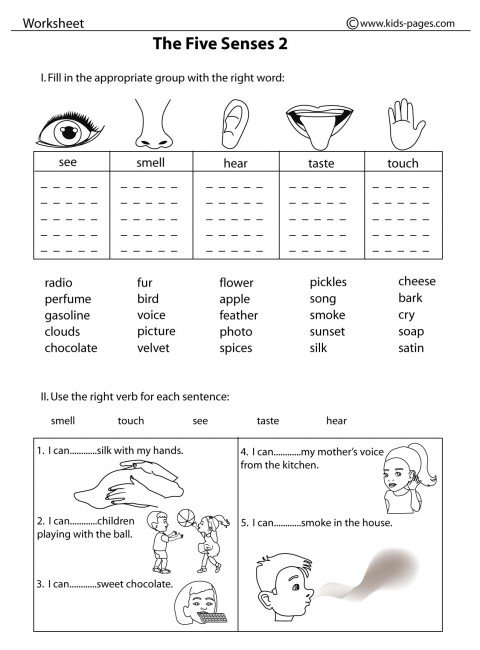Teaching children about the five senses is an important part of early education. Understanding how we use our senses to interact with the world around us is crucial for cognitive development. One effective way to engage students in learning about the five senses is through worksheets. These worksheets can help students explore each sense in a fun and interactive way, reinforcing their understanding of how we perceive the world.
Five senses worksheets are designed to help students identify and categorize different sensory experiences. These worksheets often include activities such as matching pictures to the correct sense, filling in the blanks to complete sentences about each sense, and drawing pictures of objects that relate to a specific sense. By engaging in these activities, students can deepen their understanding of how each sense works and how they are used in everyday life.
One common activity found in five senses worksheets is matching pictures to the correct sense. For example, students may be asked to match a picture of a flower to the sense of smell or a picture of a guitar to the sense of hearing. This activity helps students make connections between objects and the senses that are used to experience them. It also encourages critical thinking and problem-solving skills as students determine which sense is most closely associated with each picture.
Another type of activity found in five senses worksheets is filling in the blanks to complete sentences about each sense. Students may be given a sentence such as “I use my ears to _____” and asked to fill in the blank with the word “hear.” This type of activity reinforces vocabulary related to the five senses and helps students understand the function of each sense in a practical context. It also encourages language development and literacy skills as students learn to express themselves in writing.
In addition to matching pictures and filling in the blanks, five senses worksheets may also include drawing activities where students are asked to illustrate objects that relate to a specific sense. For example, students may be asked to draw a picture of their favorite food to represent the sense of taste or draw a picture of a rainbow to represent the sense of sight. This type of activity allows students to express their creativity while reinforcing their understanding of how each sense is used to perceive the world around them.
In conclusion, five senses worksheets are a valuable tool for helping students explore and understand the world through their senses. By engaging in activities that involve matching pictures, filling in the blanks, and drawing objects related to each sense, students can deepen their understanding of how we use our senses to interact with the world. These worksheets not only reinforce cognitive skills but also encourage creativity and self-expression. Incorporating five senses worksheets into early education curriculum can help students develop a strong foundation in understanding the importance of the five senses in their everyday lives.
